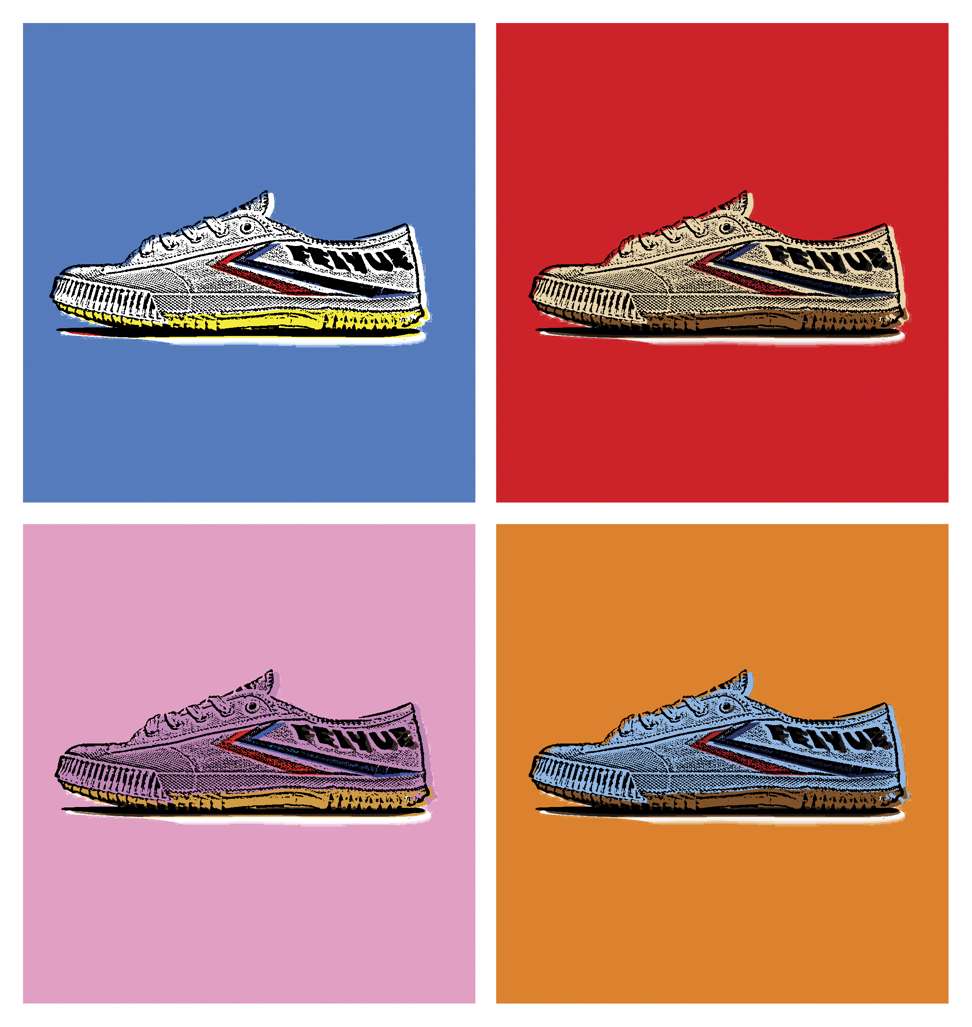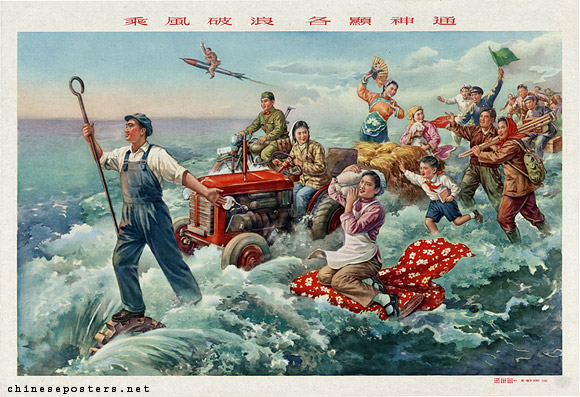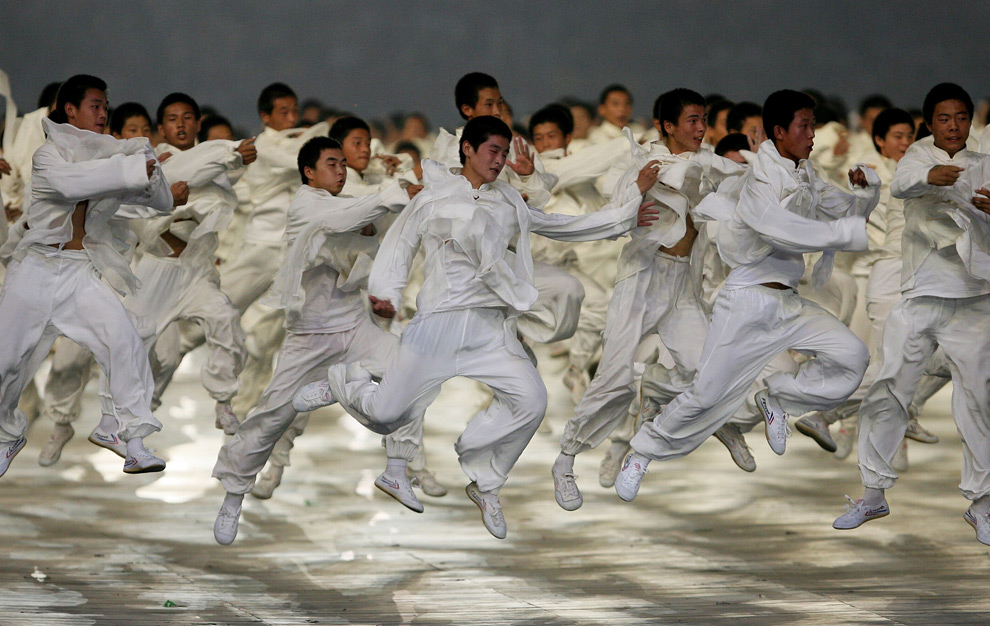FEIYUE:
National Pride and
Retro Culture’s Best Kept Secret
Metropolitan tastes in streetwear fashion have refined themselves into ensembles for which we, the humble consumers, act as coat-hanger displays of clothes that are more fun than we are – and often, much older.

Source: South China Morning Post
The bold badassery of street fashion is almost always entangled in an obsessive affair with its own past. Today, wearing something that is historically relevant and blessed with heritage is considered ‘cultured’ (not excusing the pun, because literally), both in an exotically artistic and puristic sense. In other words: the past is the future, fellow millenials and gen-Z’ers. Distinctions of national pride have become vintage icons and fashionably nostalgic artefacts in global vogue culture – and one super old and super classic Chinese brand encapsulates this very essence.
Feiyue.
When the blue and red winged stripes of Feiyue sneaker brand flew forward into Foster the People’s music video for ‘Pumped Up Kicks’ in 2010, those who were in the know probably felt cool and wizened, and those who weren’t wanted in.

Lead vocalist Mark Foster in Foster the People’s music video for ‘Pumped Up Kicks’.
Source: YouTube
An Evergreen Beginning
Prior to the representation of the kicks in the western music scene, Feiyue had already achieved both local and international cult status. With their inception in Shanghai, the shoes were first introduced as a military staple for the Chinese government in 1948.
The brand’s name, “fei yue” in its pinyin form (simplified Chinese: 飞跃 ; traditional Chinese: 飞跃), means “to leap” or “to fly over”; a name that, at the time, resonated with Chairman Mao’s campaign, The Great Leap Forward.
The Great Leap Forward was an economic and social blueprint to reconstruct the country’s agricultural economy into an industrialized communist society. It was one of the most pivotal moments in Chinese history, imbued with an overwhelming spirit of unitedness and patriotism. Efforts were made to foster inspiration and faith in the new nation. The Logistics Department of the Chinese People’s Liberation Army entrusted the Dafu Gonji Rubber Factory (as it was then known) to design ‘liberation shoes’ that were made of cloth and rubber. More than ten million pairs were produced in green: the colour of hope, renewal and utilitarian ideals that stood for “the greater good”.

A propaganda poster from The Great Leap Forward era: Brave the wind and the waves, everything has remarkable abilities.
Source: www.chineseposters.net
The Sorcery
The artisans of the military shoes placed heavy emphasis on comfort, firmness and durability, features that worked in the brand’s favour when the shoes were reinvented as “track and field” sneakers in 1958. The green colour was substituted for the now-familiar minimalistic white and black colors, with the added stylistic blue and red chevron stripes.
The shoes were (and still are) made with a wide fore-foot and enhanced details designed to protect the toes and increase elasticity. The robust, yet modestly padded rubber plimsoll creates the experience of flight-like bouyancy in the feet. A narrow waist and the cotton canvas material allow for flexibility in the ankle and a wide range of motion – requirements in martial arts application. The rounded outsole renders a strong grip and good anti-skid properties, resulting in an enjoyably secure shoe.
More Reasons to Take the Leap
In 1963, Dafu’s shoes gained instant wardrobe-staple status with almost all wushu practitioners and athletes. They quickly became established as the best-selling shoes in China, with football coach, Xu Genbao and player, Qi Hong being seen wearing the track and field versions in contests. Feiyue became highly favoured by Shaolin monks and Kung Fu masters, who, until today, still prefer the sneaker for their tiger claw practice; and parkour savants are following suit.
In another iconic moment of yesterday’s 2008 history, the Beijing Olympics saw Feiyue symbolically wrapped around the nimble feet of martial arts perfomers at the Opening Ceremony in an authentic display of heritage, national pride and achievement.

Martial arts performers wearing Feiyue shoes during the Opening Ceremony of the 2008 Olympic Games in Beijing.
Source: Streeter Lecka/Getty Images
Today, the Chinese brand still retains that original artistry, touting handcrafting processes in the creation of the classic fe lo silhouttes that are older than most of our grandparents (my attempt at math says it’s nearing 100 years), making them excitingly retro, while upgrades to new colors and aesthetics have been developed in response to die hard fans in love with the cultural authenticity of the brand.
The sneakers stand as a proud testament to China’s eventual triumph in establishing a thriving socialist society, a factor which Feiyue adheres to in making them an affordable item that everyone can inherit. Because retro culture is not about the money, money, money, it’s about the timelessness of heritage and the shared experience of great memories.
Traditional Feiyue shoes drying outside a Shaolin kung fu school dormitory in Henan province, China.
Source: South China Morning Post
Lerato Ramodike is a Pretoria based writer, she’s a novelist, short story writer and visual artist.


